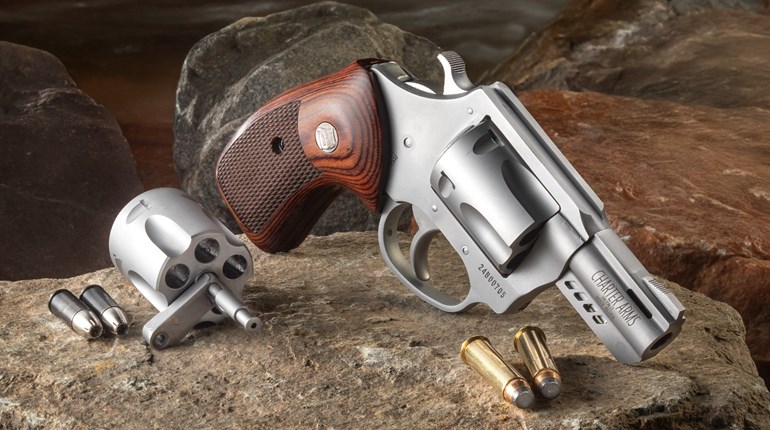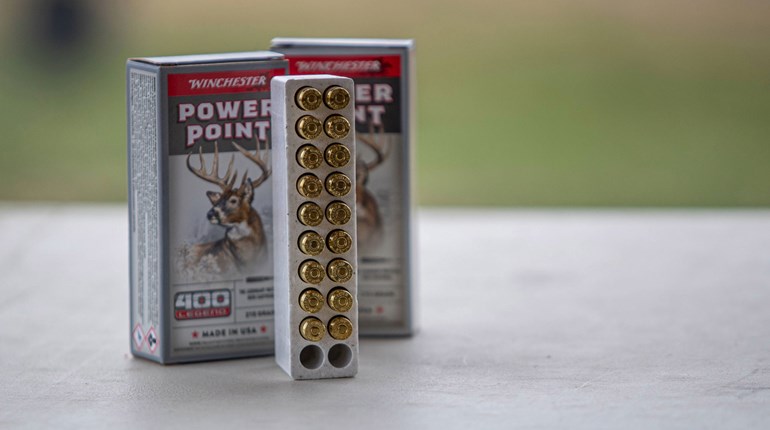
This happens when companies invest research and development dollars into specific products, and companies invest when market demands indicate their spending will be rewarded with sales.
When Ruger introduced its partially polymer LCR in .38 Spl. a couple of years ago, the overwhelming number of orders for the new gun provided ample proof the company's R&D decisions were correct. In 2010, Ruger invested in a couple of upgrades to the LCR product line, and I suspect these decisions will prove equally sound.
If you're wondering how the company chooses where to invest, it's simple—listening. Ruger has a "Voice of the Customer Program" in which company personnel get together with dealers and consumers and listen to what these people want. The input was simple and overwhelming: they wanted a small, lightweight, corrosion-resistant revolver with a good trigger pull. The name LCR (Light Compact Revolver) addresses those first two requirements. What the name doesn't say is Ruger also came up with a nice solution to the corrosion issue and produced an incredibly smooth trigger. But let's start with the basics.
The original LCR has a monolithic, aerospace-grade, 7000-series aluminum frame supporting the barrel and cylinder. The frame is the same on all the .38 Spl. LCRs, but on the new .357 Mag. chambered LCR-357, the frame is made from blackened 400-series stainless steel to handle the more-powerful cartridge.

The cylinder on all LCRs, both .38 and .357 chamberings, is made of high-strength stainless steel. The cylinders have distinctly large flutes compared to other compact revolvers to reduce weight, and they have been treated with Ruger's Advanced Target Grey finish. The polymer fire-control housing (which includes the trigger guard) holds all the fire-control components and reduces the weight of the gun while helping to further reduce felt recoil. The final weight for the LCR .38 Spl. model is 13 or 13.5 ounces while the .357 Mag. weighs 17.1 ounces.
The guns all have the same grip peg as an integral part of the frame. This permits the shooter to install a variety of grip styles and sizes to suit his or her needs. In fact, it is the grip that accounts for the most visible difference in the various models. As delivered from the factory, the original LCR in .38 Spl. and the new LCR-357 have Hogue's Monogrip with Tamer insert, which is the largest and most comfortable grip I've tried. The two new .38 Spl. LCRs have different grips and sight systems. One has the XS Sight Systems Standard Dot tritium sight and the Hogue boot grip. The boot grip is the most compact available, but is still quite comfortable to shoot—even with +P loads. The final offering in the .38 Spl. LCR lineup has the standard, pinned front-sight blade, but comes with Crimson Trace Lasergrips. If you've used these on other guns, you know what a tremendous asset they can be in a self-defense situation.
I saved the best for last—the LCR's incredible trigger pull. It's difficult to convey in words how smooth the LCR trigger is; this is a gun that really must be shot to be understood. To put it succinctly, it's the best out-of-the-box double-action trigger pull I've ever experienced on any factory gun. Ruger's literature says the Friction Reducing Cam "is a next generation design in fire-control systems with an optimized cam that results in a smooth, non-stacking trigger pull." For a press release, this is quite an understatement.
My test guns included an LCR-357 with the Tamer grip and a .38 Spl. LCR with the boot grip and XS Sights. Triggers on both were super smooth. Being slightly more hand-filling, the Tamer grips gave the LCR-357 an edge when running through a cylinder of ammo, but that's the normal advantage that goes with more-comfortable grips. That said, the boot grip was almost as easy to shoot, while being much more easily concealed and printing less through trouser pockets. A huge advantage with both guns was the enhanced performance I realized when shooting with my weak hand. When I go leftie, I have trouble scratching an itch, much less operating a double-action revolver. What a difference with the LCR!
In a chat with Ruger's Ken Jorgensen, he told me, "The LCR was not designed by engineers and then passed on to manufacturing to determine how they would build it. Manufacturing processes were considered in every step of the design process." The result is that LCR .38 Spl. and .357 Mag. parts have the same dimensions and all guns are made in the same manufacturing cell. The only differences in assembly are the grips and front sight, and the process is basically the same regardless of what parts are placed in the line.
Hogue has done a nice job on the two different-style grips. Both the Tamer and the boot grip have an extremely soft spot on the back of the grip, right where it touches the web of the shooting hand. While lightweight bullets in .38 Spl. (like the 110-grain loads I shot from Cor-Bon and Hornady) don't produce painful recoil, the soft spot helps when you step up to loads using 150- to 158-grain bullets. But, few things are more obnoxious than firing serious .357 Mag. loads in a compact, lightweight revolver. Between the Tamer grip, the polymer housing and the overall LCR design, full-house magnum loads were invigorating, but manageable. Shooting a few powerhouse loads in the LCR-357 is likely to become a routine part of my practice sessions with the revolver, whereas with other guns I debated even carrying these loads on the street. Firing the pistol with .357 Mag. bullets in the 125- to 140-grain weight range, the sights were right on at 15 yards.
I mentioned the great trigger pull, but not the trigger shape or finish. It's nicely polished with rounded edges, so there is no resistance or chafing as your finger moves the trigger through the long double-action pull. The trigger guard shape is also improved. In many polymer guns, the bottom of my trigger finger drags across the inside base of the trigger guard. At a minimum this is detrimental to trigger control, and after many rounds, the trigger finger can get blistered or rubbed raw. Neither of these conditions will improve your shooting skills. The LCR trigger guard drops down as it nears the grip, leaving lots of room for your finger to complete the trigger pull without touching any interfering surfaces. While I consider this a great design improvement, the downside is the enlarged guard shape won't allow the LCR to fit in many existing pocket or compact holsters, particularly those form-fitted to other snubbies.
At a Gunsite Academy shoot, I used two Galco rough-side-out holsters that worked quite well with the LCRs: the Pocket Protector and Stow-N-Go IWB. Since the surfaces of both grips are somewhat sticky and can catch on clothing, you might prefer carrying the LCR on a belt rather than in a pocket. Fortunately, Ruger is offering belt holsters made by Mitch Rosen specifically for LCRs.
At first glance you might find the appearance of the LCR a bit odd, but then that's what folks thought initially about the horseless carriage and canned beer. Don't dwell on anyone else's opinions. Hopefully, Ruger will soon have some of the LCRs at gun ranges for rent. Shoot one, particularly with proper defensive loads. It won't take many rounds to feel the improvements, and by the end of your range session, you'll want one.






































